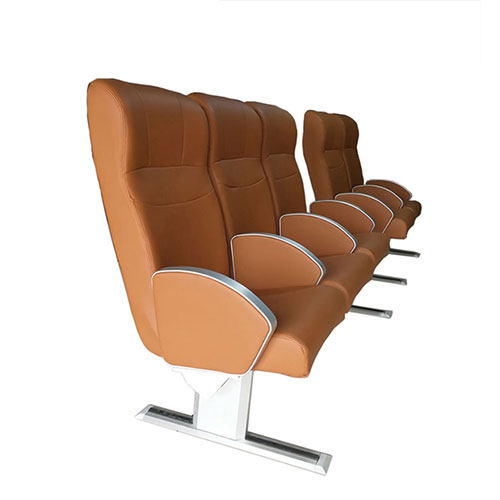Blogs
on March 12, 2024
Comfort, safety, and aesthetics are paramount in the design of marine passenger seats, shaping the onboard experience across various vessels from luxurious cruise liners to efficient ferries. This article explores the latest trends and advancements in marine passenger seat design, focusing on innovative designs and cushioning materials that are revolutionizing travel on the high seas.

Emphasis on Ergonomics
Modern marine passenger chairs prioritize ergonomic design to enhance comfort during long journeys. These seats offer proper lumbar support, promote good posture, and alleviate fatigue. Features such as adjustable headrests, armrests, and seat recline provide passengers with personalized comfort options to suit their preferences.
Enhanced Durability in Harsh Conditions
Marine environments pose unique challenges like saltwater exposure and adverse weather conditions. Innovative seat designs integrate materials resistant to corrosion, fading, and wear. Utilizing high-quality marine-grade upholstery fabrics, reinforced frames, and corrosion-resistant components ensures longevity, reducing maintenance costs and ensuring reliability over time.
Adoption of Lightweight Materials
Advancements in lightweight materials contribute to fuel efficiency and carbon emissions reduction in marine transportation. Innovative seat designs utilize lightweight yet robust materials such as aluminum alloys and composite polymers, achieving a balance between durability and weight savings. Lightweight seats also facilitate easier installation and reconfiguration, offering operational flexibility to vessel operators.
Space Optimization Solutions
Maximizing space is crucial in marine passenger seating design, especially on vessels with limited real estate. Foldable and stackable seat designs optimize cabin space, enabling flexible seating arrangements and efficient use of onboard areas. Smart mechanisms allow seats to be easily stowed away when not in use, creating versatile passenger environments.
Customization for Diverse Needs
Passenger preferences vary widely, necessitating customizable seating solutions. Innovative seat designs offer options for seat width, cushion firmness, upholstery color, and configuration layouts. Modular seating arrangements accommodate varying passenger capacities and spatial constraints, ensuring flexibility and adaptability.

Integration of Shock-Mitigating Technology
In vessels navigating rough seas, shock-absorbing seating arrangements are essential for passenger safety and comfort. Advanced shock-absorbing materials and suspension systems are integrated into maritime passenger seats to minimize wave-induced vibrations and vessel motion impacts, reducing the risk of passenger injuries and enhancing ride comfort.
Implementation of Fire Retardant Materials
Safety is paramount in marine transportation, particularly concerning fire prevention measures. Innovative seat designs incorporate fire-retardant materials and fabrics compliant with international safety standards. Fire-resistant foams, upholstery fabrics treated with flame-retardant coatings, and self-extinguishing cushioning materials enhance passenger safety and ensure regulatory compliance.
Adoption of Sustainable Materials
There is a growing focus on sustainability in marine passenger seat design. Innovative seating solutions utilize eco-friendly materials such as recycled plastics, bio-based foams, and low-impact upholstery fabrics. Sustainable seat designs aim to minimize carbon footprint, reduce waste generation, and promote environmental stewardship in the maritime sector.

Integration of Amenities
To enhance the passenger experience, modern marine passenger seats feature integrated amenities and connectivity features. USB charging ports, adjustable reading lights, foldable tray tables, and personal entertainment systems are seamlessly integrated into seat designs, providing convenience and entertainment options during voyages.
Aesthetic Considerations
Aesthetic appeal is given importance alongside comfort and utility in modern maritime passenger seats. Sleek lines, contemporary finishes, and customizable color options result in visually appealing seating solutions, elevating the ambiance of onboard spaces. Innovative seat designs combine style with substance, enhancing the overall passenger experience.
In conclusion, Seat designs are important for the passenger experience in maritime travel. By prioritizing comfort, safety, and aesthetics, modern marine passenger seats offer a delightful journey for travelers. With the integration of lightweight materials, customizable features, and sustainable solutions, vessel operators can enhance operational efficiency while providing passengers with a comfortable and enjoyable sea voyage.
Posted in: Business
Topics:
marine passenger seat design
Be the first person to like this.





